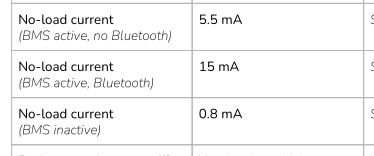I have been reading on this forum and watching Off Grid Garage and, of course, Will Prowse YouTube channels among others. There seems to be no clear cut answer to my question: shunt between battery and BMS or BMS between battery and shunt? There are good reasons on both sides of this issue.
From what I read evidently Victron wants their shunt between the battery and the BMS but I have not confirmed this for myself yet. I am using a Victron Smart Shunt.
Others think that the BMS should be the first thing off the battery and then everything else including the shunt. I am wondering if it makes a whole hill of beans which one you use because there are so many on both sides of this issue. Care to comment?
From what I read evidently Victron wants their shunt between the battery and the BMS but I have not confirmed this for myself yet. I am using a Victron Smart Shunt.
Others think that the BMS should be the first thing off the battery and then everything else including the shunt. I am wondering if it makes a whole hill of beans which one you use because there are so many on both sides of this issue. Care to comment?



